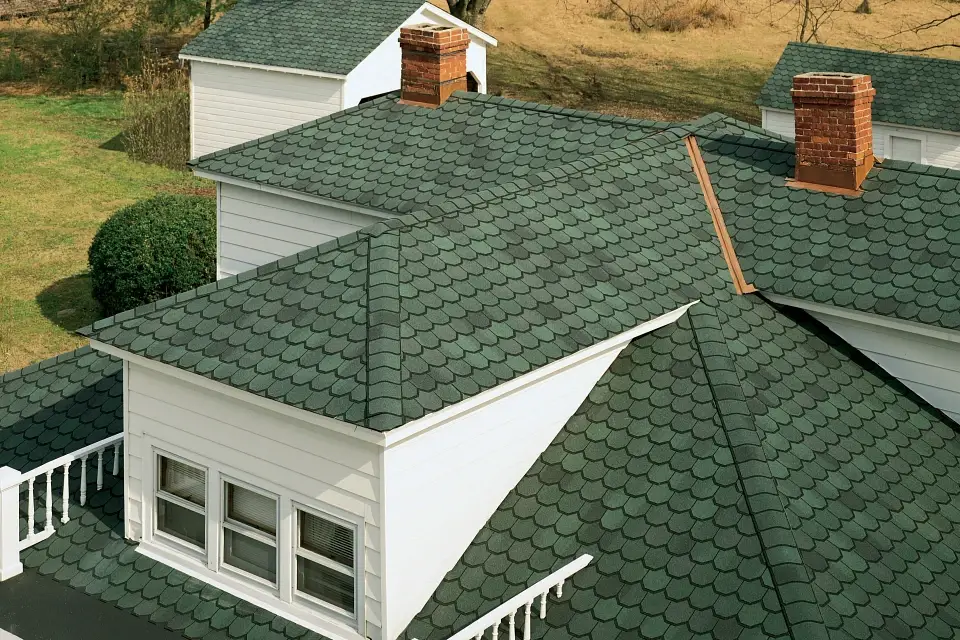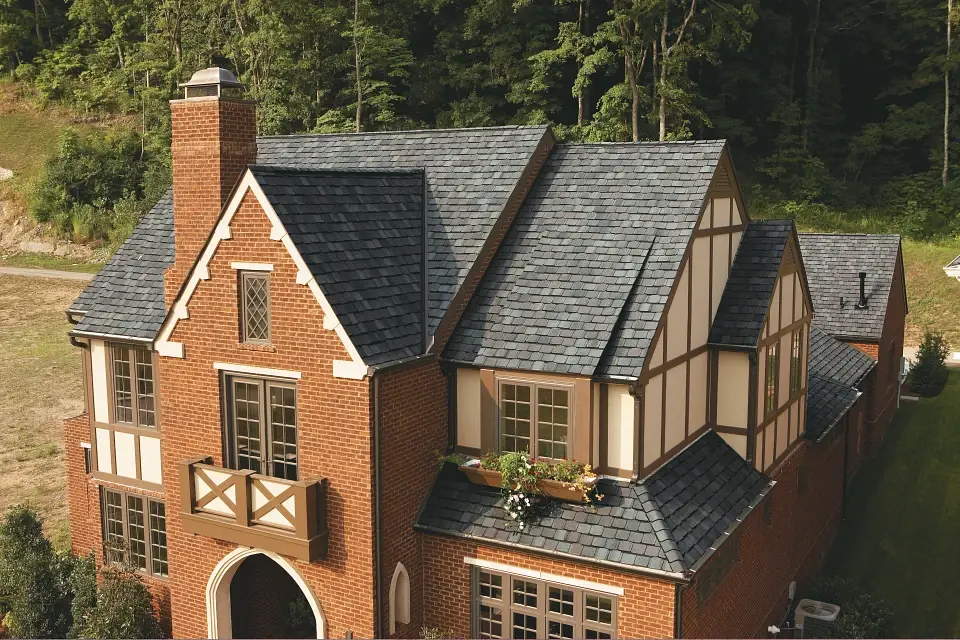Finding the Perfect Shingle Color For Your New Long Island Roof
Over 35 Years as a Roofer in Long Island
When choosing the right residential roof shingle color, the decision goes beyond aesthetics—it’s about blending style, function, and even energy efficiency. A well-chosen roof color can enhance your home’s curb appeal, complement its architectural design, and boost energy performance, making it both visually attractive and practical for your local climate.
The Role of Roof Shingle Colors
in Home Aesthetics
Understanding Your Home’s Architectural Style

Sherwood Forest
When choosing the right color for your residential roof, the decision goes beyond aesthetics—it’s about blending style, function, and even energy efficiency. A well-chosen roof color can enhance your home’s curb appeal, complement its architectural design, and boost energy performance, making it both visually attractive and practical for your local climate.The style of your home should heavily influence your choice of roof color.
Classic homes, like Colonials and Victorians, often look best with traditional shades such as deep grays, blacks, and browns. Modern homes, on the other hand, can benefit from bold contrasts such as white or even bright colors, which can create a clean and striking appearance.
Here’s a general rule of thumb for housing styles and roof colors.
- Colonial Homes: Best paired with dark, neutral shades like black or gray.
- Victorian Homes: These homes often work well with vibrant or dark roof colors like deep green or navy.
- Modern Homes: Clean, minimalist architecture often benefits from sharp, bold contrasts like white with black roofing.
Coordinating Roof Shingle Colors With Your Home's Exterior
Coordinating your shingle color with your home’s exterior is crucial for creating a harmonious and visually appealing look. The key is to match or complement your roof color with the materials used in your siding, trim, or brickwork. Coordinating your roof color with your home’s exterior finishes ensures the entire structure feels cohesive and well thought out, enhancing its overall curb appeal.
For example, a red brick home pairs beautifully with dark-colored roofs, such as brown, black, or deep gray, which enhance the earthy tones of the brick. In contrast, a home with light-colored siding, such as beige, white, or light gray, can benefit from a roof color that either matches or provides contrast, like darker shades of gray or even bold hues such as slate blue.
Another factor to consider is the style of your home and the surrounding landscape. Homes in natural settings with stone or wood exteriors often blend well with earth-tone shingles, such as greens, browns, or tans. Conversely, modern homes may benefit from sleek, minimalist colors, such as black or metallic tones, to create a bold contrast against lighter facades.
Matching Neighborhood Aesthetics
When selecting a roof color, it’s important to consider the overall aesthetic of your neighborhood to ensure that your home complements its surroundings. While you want your home to stand out, it’s best if the roof color aligns with the broader palette of nearby houses, particularly in areas where traditional or neutral tones dominate.
For example, if most homes in your neighborhood feature muted grays or earth tones, choosing a bold color like bright red or blue may cause your home to clash with the local look, potentially affecting curb appeal and resale value. Neutral colors like charcoal, black, and brown are often safer choices as they can enhance your home while blending with the neighborhood aesthetic.
If your community is governed by a homeowner’s association (HOA), it’s essential to consult the rules before selecting a roof color. Many HOAs enforce guidelines that dictate which colors or materials are permitted to ensure uniformity and maintain property values. Failure to comply with these rules could result in fines or mandatory changes, which can be costly.
To avoid any issues, review the HOA’s policies early in the decision-making process and seek approval if required. By aligning your roof color with both neighborhood trends and HOA regulations, you can ensure your home looks attractive and remains in compliance with local guidelines.
Functional Considerations
When Choosing Roof Shingle Colors
Energy Efficiency
The color of your shingles can affect your home’s energy efficiency. Light-colored roofs reflect more sunlight, which helps to keep your home cooler in warmer climates. Dark-colored roofs absorb heat, which can be beneficial in colder climates by helping your home retain warmth during winter.
On Long Island, where seasonal temperatures vary significantly, a balanced approach works well. Light roofs can help reduce cooling costs in the summer, while dark roofs can help retain warmth during the winter months.
Local Climate
Your local climate plays a significant role in determining the best roof color. For example, homes in sunny, warmer climates benefit from light-colored roofs that reflect heat, while homes in colder, northern regions benefit from darker roofs that absorb heat.
Additionally, certain colors may show wear more quickly depending on your climate. Dark roofs tend to show dirt and wear more easily, while lighter colors may require more frequent cleaning.
Roof Color and Maintenance
Consider how much maintenance you’re willing to commit to when selecting your roof color. Dark-colored roofs tend to show wear and tear more easily and may require more upkeep to keep them looking pristine. Light-colored roofs, while better at reflecting heat, may show dirt, moss, or algae more easily, which means more frequent cleaning
Adding Depth With
Architectural and Dimensional Shingles
The Aesthetic Advantage

Colonial Slate
Architectural shingles, also known as dimensional shingles, offer significant aesthetic advantages over traditional flat shingles. Their three-dimensional design mimics the look of more expensive materials like slate or wood shakes, giving your roof a textured, high-end appearance. This added depth creates a sense of luxury and enhances the overall look of your home, especially when viewed from a distance. The varied thicknesses of these shingles help to break up the flat monotony that traditional shingles can sometimes create, adding visual interest and complementing homes with more intricate architectural designs.
In addition to their appealing look, architectural shingles come in a wide variety of colors, allowing homeowners to choose shades that perfectly complement their home’s exterior. Whether you prefer a subtle, neutral tone to blend with the surroundings or a bolder color to make a statement, architectural shingles provide the versatility needed to achieve your desired aesthetic. Their ability to mimic the texture of premium roofing materials also makes them a cost-effective way to achieve a high-end appearance without the high-end price tag.
Beauty and Durability
Additionally, the multi-layered construction of architectural shingles makes them less prone to curling and warping than flat, traditional shingles. This not only helps protect your home but can also extend the lifespan of your roof. Your new roof may last as much as 10 to 15 years longer than traditional shingles.
Practical Tips for Choosing
the Right Roof Shingle Colors
Use Visualization Tools
Check Shingle Colors in Different Lighting
Consult a Professional Roofer

People Also Ask...
In over 3 decades of contracting work on Long Island, we’ve worked with many local home equity lenders. Give us a call and we can help you make your old house look like a brand new home.

